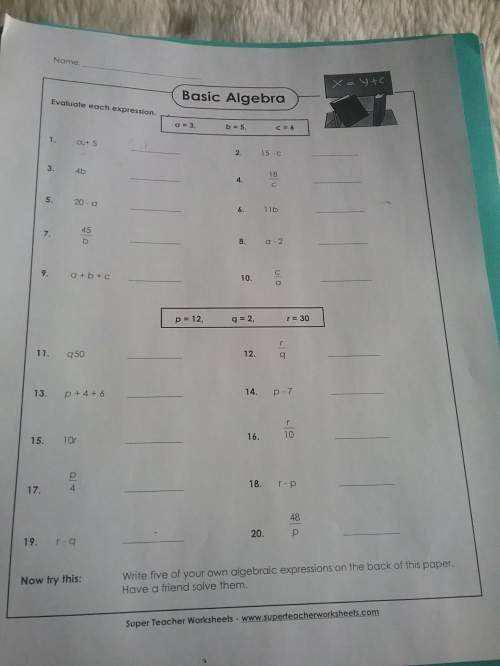
Mathematics, 15.06.2021 23:50 luisafer127
Problem 2: The difference of two complementary angles is 30 degrees. Set up a system of linear equations that would find the angles. Do not solve the system.
Problem 3: A cashier has 30 bills, all of which are $10 or $20 bills. The total value of the money is $460. Set up a system of linear equations that would find how many of each type of bills the cashier has. Do not solve the system.
Problem 4: Give an example of a system of linear equations that has no solutions. Explain how can you decide the number of solutions without solving the system.

Answers: 3
Another question on Mathematics

Mathematics, 20.06.2019 18:04
Using d, e, and f as values on a triangle and d being 60 degrees, what is the value of e and f if d is 60 degrees? also, what do you notice about the values of e and f?
Answers: 1

Mathematics, 21.06.2019 13:00
#12 find the value of x. #13 find the value of the variable.
Answers: 3

Mathematics, 21.06.2019 18:50
The random variable x represents the number of phone calls an author receives in a day, and it has a poisson distribution with a mean of 8.7 calls. what are the possible values of x
Answers: 1

Mathematics, 21.06.2019 21:30
Acoffee shop orders at most $3,500 worth of coffee and tea. the shop needs to make a profit of at least $1,900 on the order. the possible combinations of coffee and tea for this order are given by this system of inequalities, where c = pounds of coffee and t = pounds of tea: 6c + 13t ≤ 3,500 3.50c + 4t ≥ 1,900 which graph's shaded region represents the possible combinations of coffee and tea for this order?
Answers: 1
You know the right answer?
Problem 2: The difference of two complementary angles is 30 degrees. Set up a system of linear equat...
Questions


Mathematics, 10.06.2020 16:57

History, 10.06.2020 16:57

History, 10.06.2020 16:57





Mathematics, 10.06.2020 16:57



Social Studies, 10.06.2020 16:57







Physics, 10.06.2020 16:57

Geography, 10.06.2020 16:57





